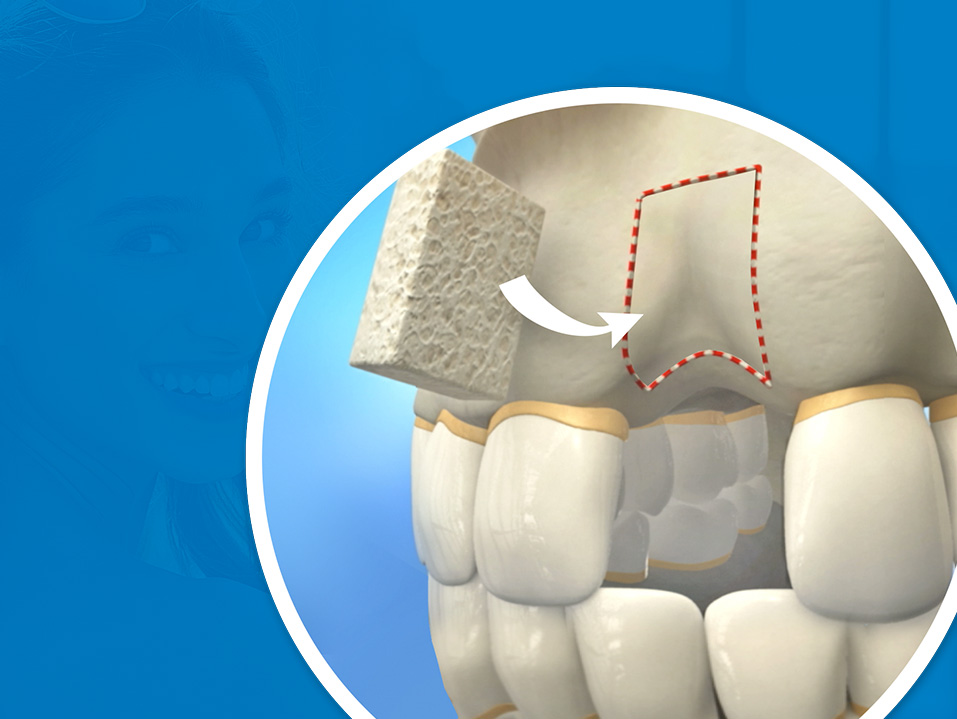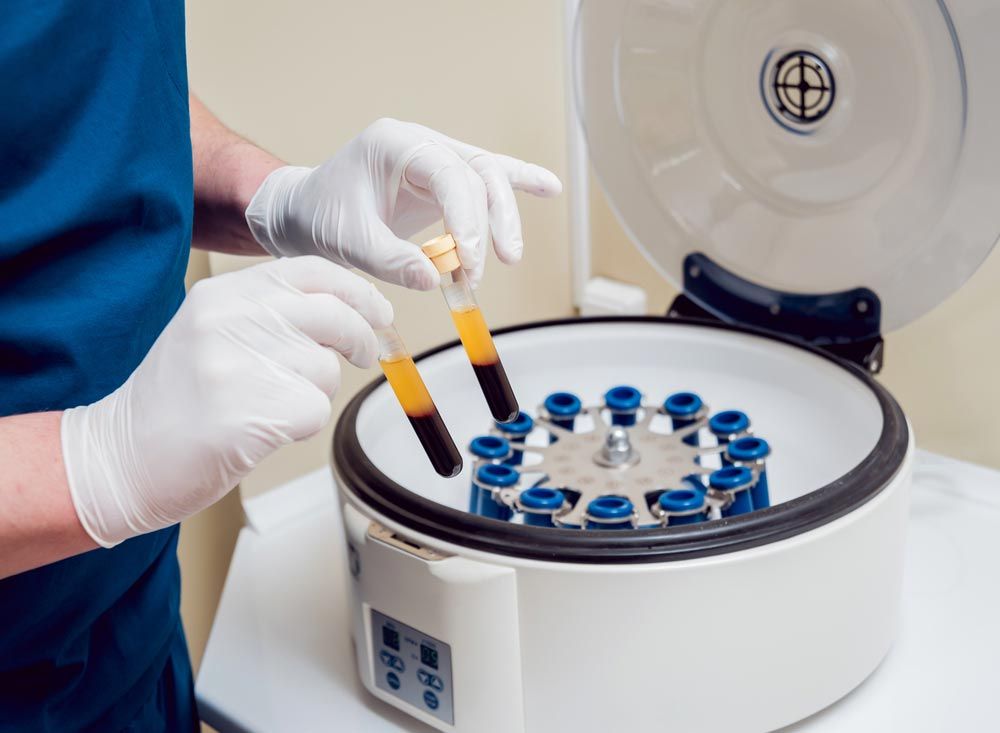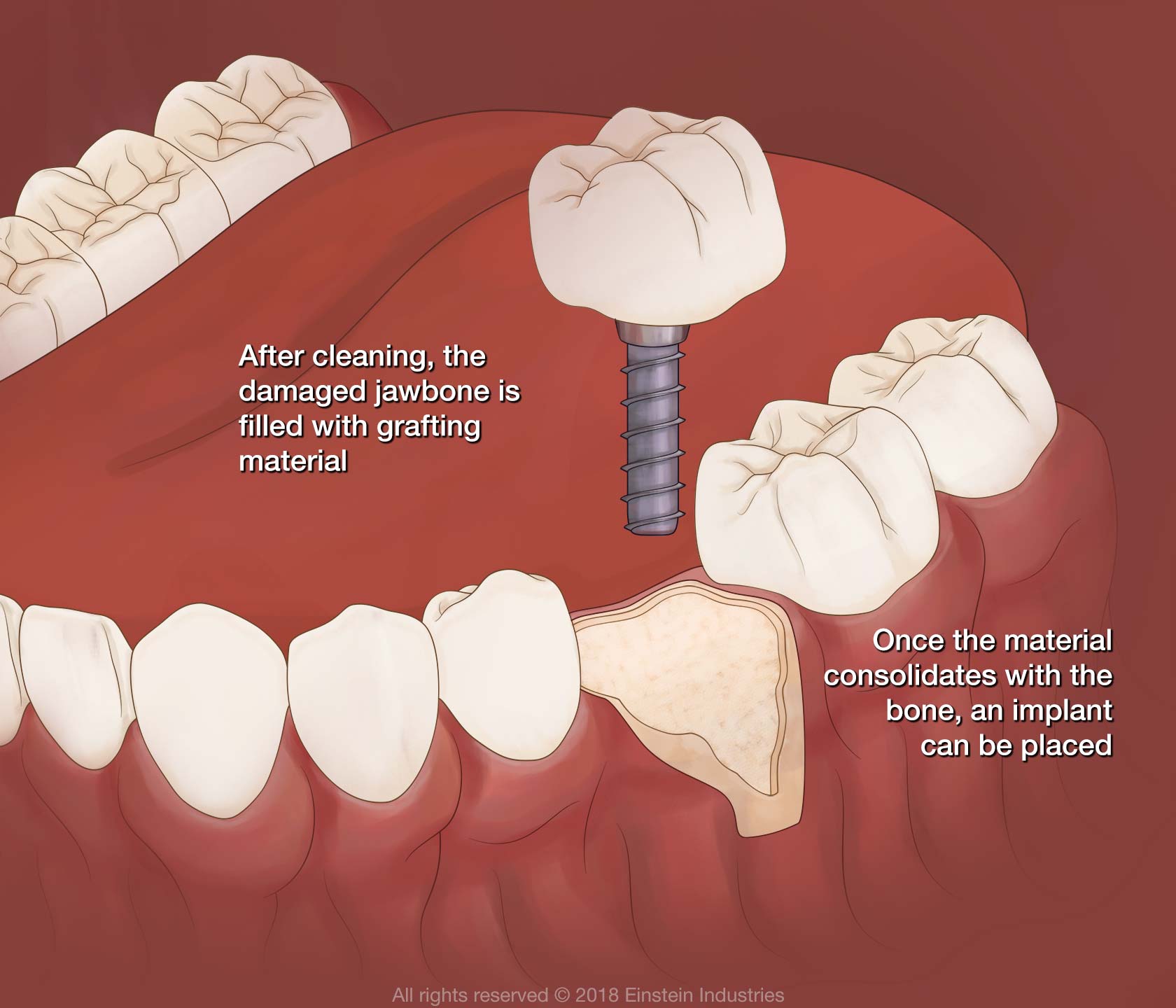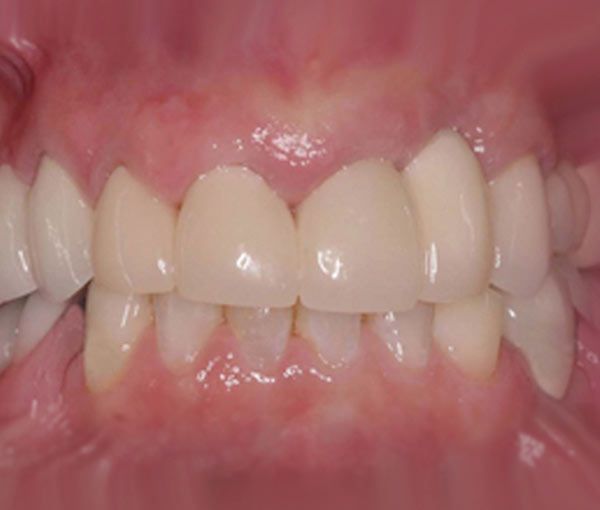What is a dental bone graft?
A dental bone graft is a surgical procedure that involves adding bone grafting material to areas of your jawbone that have been thinned in order to increase the volume and density of your bone. It helps create a solid foundation for the placement of implants or other restorative procedures.
Who needs a dental bone graft?
Dental bone grafts are done in situations where people have missing bone caused either due to trauma, injuries, birth defects, periodontal disease, in order to create a foundation to receive a dental implant or other restorative procedures, and also to preserve the area in order to prevent bone loss caused due to the natural healing process post tooth extraction.
Do I need a bone graft after a tooth extraction?
Absolutely, yes. When a tooth is extracted, the jawbone loses the stimulation it previously received from the root, thus leading to bone resorption and alveolar shrinkage of the bone. Studies have shown that if no bone grafting is done, there is a significant amount of bone loss that occurs in the alveolar bone width in the first year post tooth extraction. Hence, I highly recommend a bone graft post-extraction, whether or not you decide to get an implant.
Are there any risks associated with dental bone grafts?
Like any surgical procedure, there are always some risks associated with surgery. With bone grafts, if done correctly, the success rate is usually very high. However, in very few cases, the bone graft can get infected and can fail, especially if a patient has other medical issues or untreated medical diseases, or if there is any postoperative infection that can occur in case of poor hygiene or poor technique. However, we do provide all our patients with antibiotics, pain relief, and mouthwash to help the healing process be much smoother.
How is the bone graft surgical procedure done?
The bone graft surgical procedure is usually done under local anesthesia, so the patient will be awake and aware at all times. However, it will be painless as the patient is locally numbed in the area of the surgery. A small incision is made in the site where the bone graft needs to be received, and a flap is elevated. We clean out the area and add the bone graft material into the socket. A resorbable or a non-resorbable barrier called a membrane is sometimes used over the area to help protect the bone graft particles and keep them in place, and then stitches are given on the top. The procedure is usually painless, and most people recover very well after the surgery within two weeks.
What is bone graft material?
There are four different kinds of bone graft materials available. Either you can take autogenous bone, which is bone taken from the patient's own body, or you can take allografts, which is bone derived from human donor tissue, typically from bone banks. You can also get xenografts, which are derived from animal donors like pigs and cows, or alloplasts, which are lab-derived substitutes for bone graft material. In our practice, the most commonly used product is called an allograft. It works very well, we've seen great success with the product, and it also reduces donor site morbidity. I highly recommend using allografts. However, depending on the extent and amount of bone graft needed, it's important for you to come in for a consultation so that we can evaluate the site and choose the material that's best suited for your body.
What is the bone graft healing process like?
The initial healing process can take about two weeks for a patient to start feeling comfortable. During this time, moderate pain, swelling, and discomfort can be expected in the area. We do provide patients with antibiotics, mouthwash, and painkillers in order to help the healing process be much smoother. However, in the long run, the bone takes over 3 to 6 months, even up to a year in some cases, to get completely resorbed and replaced by natural alveolar bone.
Bone Grafting
Facial trauma, untreated gum disease, and tooth loss can result in jawbone recession, making it difficult to qualify for dental implants.
Bone grafting is a procedure designed to add volume and density to the jawbone and reestablish your candidacy for implant placement.
Let's take a closer look at how bone grafting works...

Grafted Bone Can Function Like
NATURAL BONE TISSUE
Help Replace Missing Teeth
Using a biocompatible grafting material or tissue from another part of your body, bone grafting can create a stable foundation for dental implants, allowing you to repair your smile.
Protect Your Smile after an Extraction
After removing a tooth, the jawbone can deteriorate. By packing the tooth socket with grafting material, a bone graft can prevent tissue loss
High Success Rate
Studies have shown that dental implants placed in grafted tissue have similar success rates to implants placed in natural bone.
Let's take a look at the grafting process...
Everyone Should Have Access
TO DENTAL IMPLANTS

Dental implants placed in grafted bone tissue have shown outstanding success rates, similar to those of implants placed in natural bone.
According to ORAL & Implantology
Why do I need a graft?
A Bone Graft Can
ADDRESS A VARIETY OF ISSUES

Bone Loss Due to Gum Disease
The advanced stages of periodontal disease involve tissue loss in the jaw and can affect the stability of your teeth.

Loose Teeth
Teeth can become loose for a variety of reasons and when left untreated, can result in tooth loss.

Developmental Defects
Certain developmental defects result in areas of missing tissue in the jaw.

Face Injury or Trauma
An injury or other traumatic incident can cause the loss of bone tissue in the jaw.
SPEED THE HEALING PROCESS Advanced Techniques Can
More and more doctors are integrating platelet-rich fibrin (PRF) and platelet-rich plasma (PRP) into their grafting procedures. Your doctor can create PRF and PRP by separating healing factors from your blood by spinning it in a device called a centrifuge. Then they can apply PRP or PRF to your surgical site and speed up the healing process.

While the Procedure Varies
A TYPICAL GRAFT INVOLVES SEVERAL STEPS
Planning
Your dentist will conduct imaging to assess the quality and quantity of your bone tissue and decide where the bone grafts are needed.
Preparation
You will receive local anesthesia and any requested sedation. Then your doctor will create an incision in your gums.
Graft Placement
Your doctor will carefully place the synthetic grafting material or autologous bone tissue in the recessed jawbone.
Sutures
Your dentist will close the surgery site with sutures.
Recovery
Dental bone grafts are outpatient procedures, so you will be able to return home soon after your surgery to recovery.
So what is recovery like?

Bone Grafts Are Most Commonly Used
TO RESTORE CANDIDACY FOR IMPLANTS
One of the roles of tooth roots is to stimulate the jaw, which signals that nutrients are needed in the area. When you lose a tooth, your brain reroutes essential nutrients away from that area of the jaw.
The longer a tooth is missing, the more likely it is that the jaw will begin to atrophy. Over time, this tissue loss can affect the stability of other teeth, cause further tooth loss, and give your face a sunken, aged appearance.
After a certain point, the jaw loses so much tissue that placing implants is no longer an option without first performing a dental bone graft.
How do I know if I qualify for a bone graft?
Bone Grafting Results

Before — This patient had bone loss due to missing teeth.

After — A graft and a set of dentures restored their smile.
Candidates for a Graft Are
IN GOOD ORAL AND OVERALL HEALTH
Jawbone Tissue Loss
There are several types of dental bone grafts which address different degrees of bone loss. The area where you have experienced atrophy and the amount of tissue you need to replace will determine which graft you are a candidate for.
Good Dental Health
In general, it is a good idea to address other oral health issues, such as gum disease, before undergoing a grafting procedure.
Stable Overall Health
Medical concerns, such as autoimmune disorders, may limit your ability to heal after surgery and can interfere with your candidacy for a graft.
Restoring lost bone tissue in a single surgery? That sounds kind of painful.
Modern Techniques Make
BONE GRAFTING RELATIVELY PAINLESS
Thanks to careful planning and minimally invasive techniques, bone grafting is predictable and results in minimal discomfort. In addition to local anesthetic, which numbs the treatment area, your dentist may be able to provide sedation. Options such as nitrous oxide, oral medication, and intravenous sedation are safe and reliable.
How does bone grafting prepare you for an implant?
Discomfort and Swelling Is Common,
BUT SHOULDN’T LAST LONG
You may experience some discomfort after your bone grafting procedure. You can manage pain using over-the-counter or prescription medications. Swelling and bruising are normal side effects for the first few days.
During the healing process, you should:
Avoid salty, crunchy, and spicy foods
Stick with a soft diet for at least the first 24 hours
Follow all of your doctor’s instructions
Take medication as prescribed
You can reduce swelling during recovery by keeping your head elevated and using icepacks or warm heat. Most doctors recommend getting a lot of rest for the first three days.
Bone grafting is safe and effective, with long-lasting results.
It Takes at Least Three Months
FOR A GRAFT TO STABILIZE COMPLETELY
For most patients, it takes three to six months for the grafted tissue to fuse with the jawbone. For sinus lifts, the recovery period is typically longer, taking about six to nine months.
Once your graft has integrated with your jawbone, you should experience increased stability. If you need implants, your doctor can schedule an appointment to place them as soon as your graft has healed completely.
I’m not sure I understand what a graft does…
Your Body Uses Grafted Tissue
AS A SCAFFOLD TO REBUILD ITSELF
“Bone grafting is possible because bone tissue has the ability to regenerate completely if provided the space into which it has to grow. As natural bone grows, it generally replaces the graft material completely, resulting in a fully integrated region of new bone.” – The Journal of Pharmacy & Bioallied Sciences
Is a bone graft my only option?
Some Patients May Choose
AN ALTERNATIVE TYPE OF IMPLANT
If you want to enjoy the benefits of dental implants without undergoing bone grafting, ask your dentist if they offer All-on-4® or mini implants. These treatments often do not require preparatory procedures such as bone grafting.

